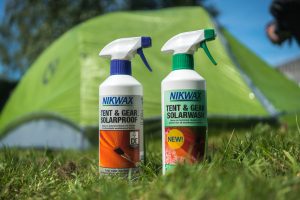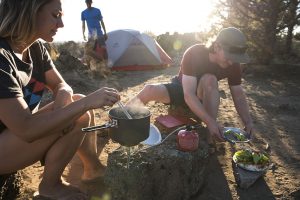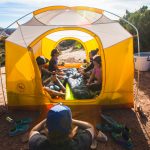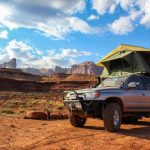Many people enjoy going on hiking trips, mountaineering expeditions, and other outdoor activities. However, one thing that can make or break a trip is having a reliable stove to cook with it.
In this post, we will cover the different types of fuel, how to choose your stove, and some considerations when deciding on which stove is best for you.
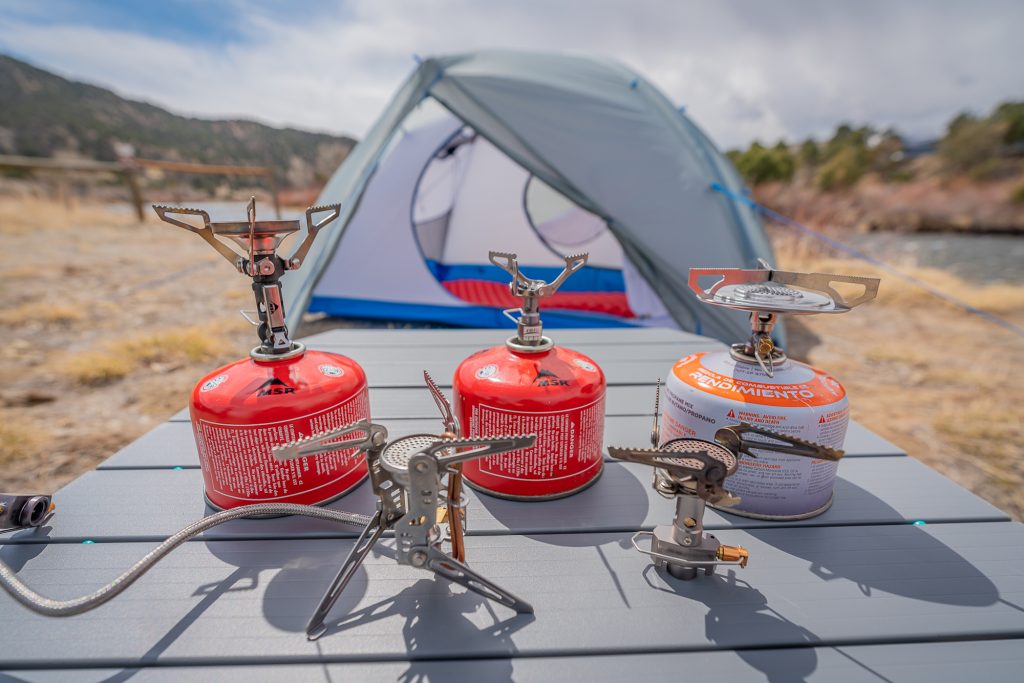
Table of Contents
Quick Recommendation
| RANK | PICTURE | NAME | RATING | SHOPS |
|---|---|---|---|---|
| Best Overall |  |
MSR Pocket Rocket
|
 |
|
| Best Efficiency | 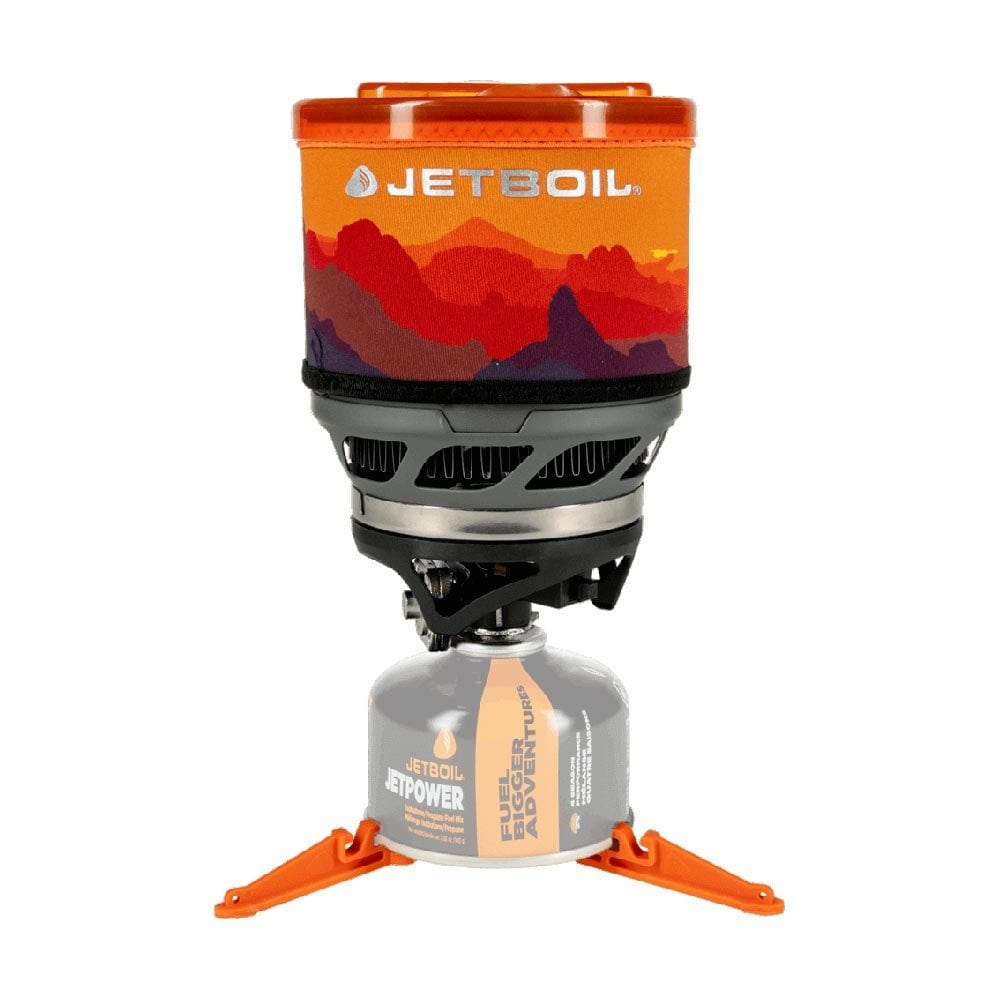 |
Jetboil MiniMo
|
 |
|
| Editor Choice | 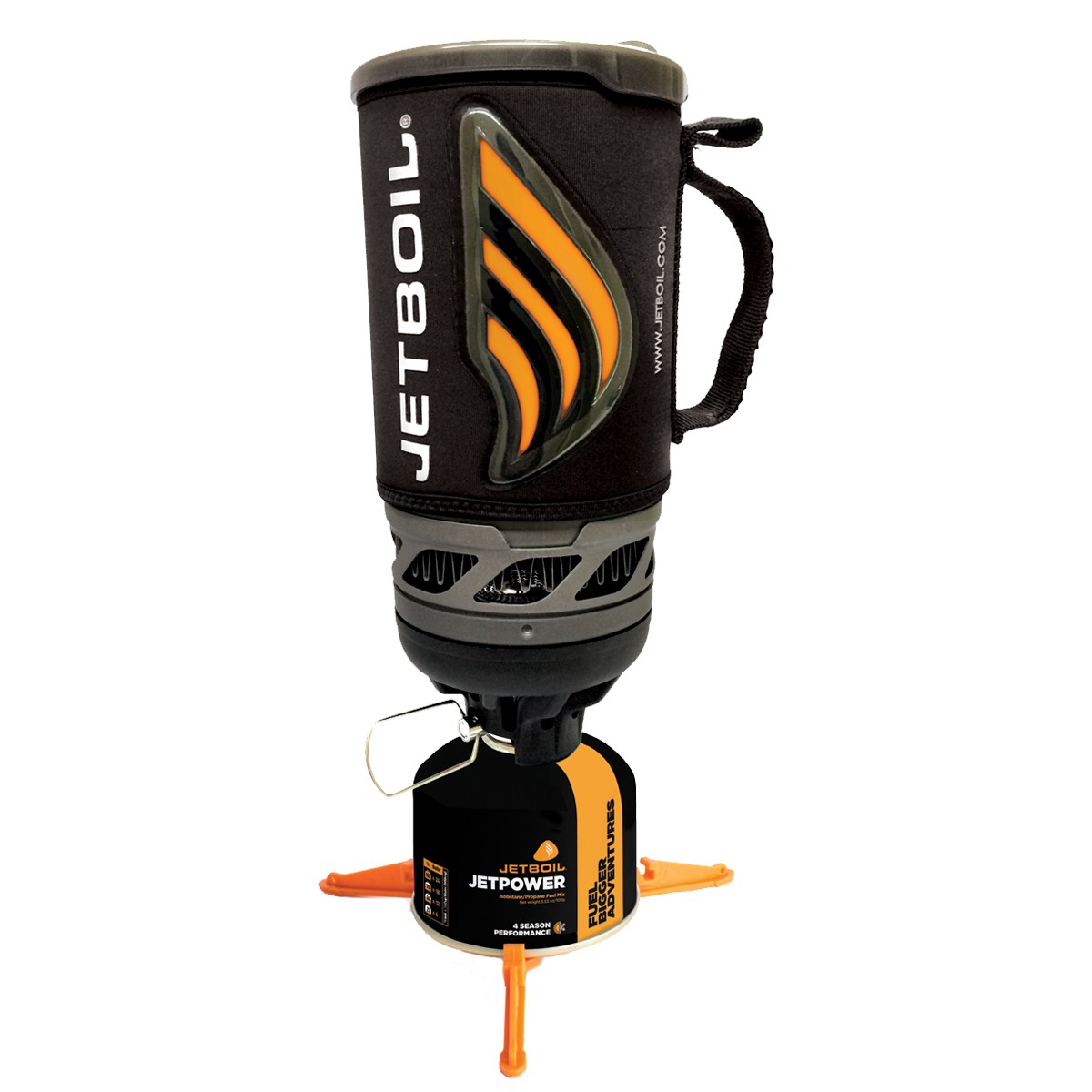 |
Jetboil Flash
|
 |
|
| Best Budget |  |
BRS 3000T
|
 |
|
| Most Versatile | 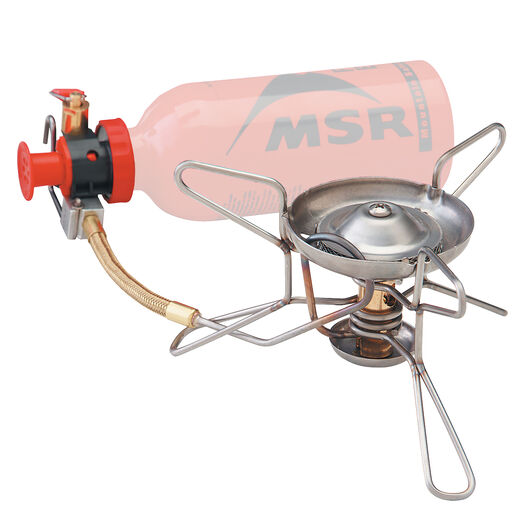 |
MSR WhisperLite
|
 |
MSR Pocket Rocket

Fuel Type: Liquefied Petroleum Gas
Integrated Pot: No
Time to Reach Boil(1L): 3.5 min
Weight: 2.56 oz
What We Like: Lightweight and Compact, Comes with a carrying case, Uses multiple brands of canisters, Low Price
What We Don’t Like: Not fuel-efficient, Needs a wind guard
Review: The MSR Pocket Rocket is a lightweight and compact camping stove that’s perfect for backpacking. It only weighs in at around two and a half ounces, and it comes with its own carrying case – making it easy to take on the go. The Pocket Rocket also uses multiple brands of canisters, which makes finding fuel easier. However, it’s not as fuel-efficient as some of the other stoves on this list.
Jetboil MiniMo

Fuel Type: Isobutane/propane canister
Boiling Time: 2m
Integrated Pot: Yes
Weight: 14 oz. (stove + pot)
What We Like: Efficient, Good Boiling Time, Small pot size, Excellent wind resistance
What We Don’t Like: Small pot size, Heavy & Bulky for today’s backpacking standards
Review: The Jetboil MiniMo is ideal for lightweight backpackers who are looking to cook their meals with little fuss. The stove comes in a stylish black color, which looks great and also has excellent wind resistance. It’s also very efficient at boiling water quickly (in just two minutes) making it perfect if you need to make coffee before hitting the trails or want to enjoy some hot soup after a long day of hiking.
When combined with the included pot, this setup weighs just 14 ounces – meaning you won’t be carrying around extra weight on your hike that you don’t need. We love how light yet small this product is – coming in just under $150 dollars it offers incredible value for money too.
The only downside to the Jetboil MiniMo is that its pot size might not be suitable for larger meals. If you’re looking to cook a full meal, then you might want to consider a different model with a bigger pot. But overall this is an excellent choice for backpackers who are looking for a fast and reliable stove.
Jetboil Flash
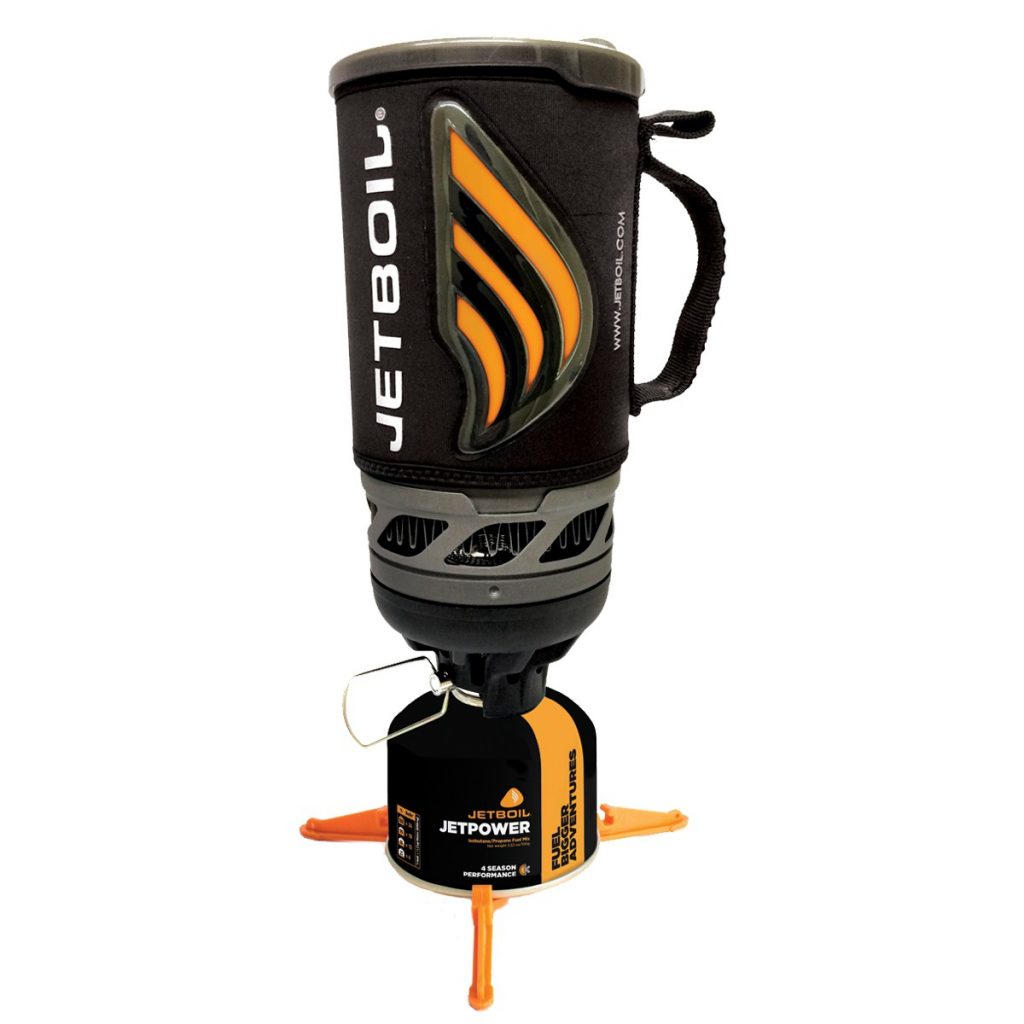
Fuel Type: Isobutane/Propane canister
Integrated Pot: Yes
Weight: 13.1 oz.
What We Like: Compact and ultralight, The logo on the side changes color when the water inside is boiling, Excellent not only for backpacking but also for camping.
What We Don’t Like: Wind can slow it down, The MiniMo is more versatile and performs better, Must allow the pot to cool before removing it from the stove.
Review: The Jetboil Flash is a great backpacking stove for those who want to go light and fast. It’s very compact, lightweight, and easy to set up – you don’t even need any tools when assembling the stove. But it also offers excellent performance; once you get it going (which doesn’t take much time at all), this little unit can boil a liter of water in just over two minutes flat.
The only downside we found was that wind seemed to have an impact on its speed while boiling, but other than that minor issue, this model did everything right: from being super-compact so as not to add extra weight if your backpack lacks space for cooking gear, through having a uniquely designed logo change color when the water inside is boiling, to being easy to put together and dismantle.
BRS 3000T

Fuel Type: Isobutane/Propane canister
Boiling Time:
Integrated Pot: No
Weight: 1 oz.
What We Like: Ultralight, Compact, Smooth flame adjustment, Very affordable
What We Don’t Like: Requires windshield for wind resistance, Not self-lighting
Review: The BRS 3000T is a perfect backpacking stove for those who want to go ultralight and still have the luxury of cooking their own food. It’s one of the smallest stoves we reviewed, so it doesn’t take up much space at all in your backpack – allowing you plenty of room for other gear. It also has a smooth flame adjustment, so you can easily control the heat output to cook whatever food you have. And at just $17, it’s one of the most affordable options on this list.
The only downside is that it does require a windshield in windy conditions – But overall, we think the BRS 3000T is an excellent choice for those looking for a lightweight and compact backpacking stove.
MSR WhisperLite

Fuel Type: Auto, Kerosene, White gas
Boiling Time: 4.4m
Integrated Pot: Yes
Time to Reach Boil
Weight: 10.9 Ounces
What We Like: Good for 2/3 Persons, Light, Compact, Easy to use.
What We Don’t Like: This stove will not function in extreme conditions, You must use a compatible isobutene fuel canister
Review: If you are looking for a durable stove that is easy to use, the MSR Whisper Lite Internationale may be exactly what you need. This lightweight option can easily support two or three people and boils water in about four minutes – making it perfect for when you want to make tea or coffee before heading out on your daily hike. It also has an attachment point that allows users to hook up their own pot, pan, mug, etc., giving them even more options while cooking. The only downside to this model is that it is not powerful enough for extreme conditions and will stop functioning once the temperature drops below freezing.
Camp Chef Mountain Series Stryker 100
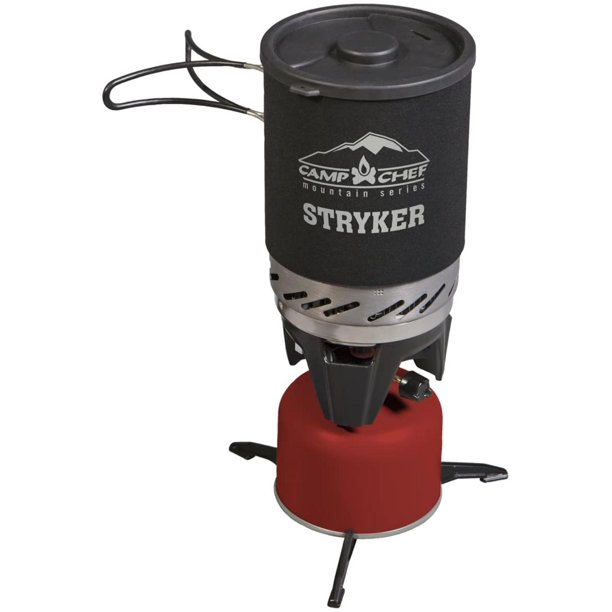
Fuel Type: Liquefied Petroleum Gas
Boiling Time: 4 minutes
Integrated Pot: Yes
Weight: 19.4 oz
What We Like: Good wind protection & Build quality, Capacity, New design features a rigid handle that locks into place, Cover stays on during transport
What We Don’t Like: The surface may rust inside of burner flange, It’s a bit too wide to fit in an exterior backpack bottle holder
Review: This stove is a great choice for backpackers who want something that packs down small and can handle large pots. The additional wind protection of the design makes it one of our top picks, while its sturdy build quality ensures durability on your trip.
The burner head has also been redesigned to slide into place instead of snap-in like with some other models – no more worrying about damaging or detaching the gas line during transport. It’s even got an integrated pot so you don’t need to worry about finding/buying another piece just for cooking. And if you do find yourself needing extra room for packing food, there are two storage loops on either side of the body that let you attach things like fuel bottles directly onto this stove without having to carry them separately.
Jetboil Zip

Fuel Type: Canister
Boiling Time:
Integrated Pot: Yes
Weight: 13.1 oz.
What We Like: Lightweight, Fast heating, Efficient fuel consumption, Excellent value for the money
What We Don’t Like: Slower at high elevations, Not very versatile, Uses canisters that are a little pricey
Review: The Jetboil Zip is a great little canister stove that is perfect for backpackers. It’s one of the lightest stoves on the market, and it heats up quickly – making it an ideal option for those who want to save time and energy while cooking. While the Jetboil Zip works best at low levels, it still manages to work decently at high elevations.
It might not be the best option for serious mountain climbers, but it’s perfect if you plan on sticking to the low-to-mid-elevations. The Jetboil Zip comes with an easy-to-use control system, and it even has a push-button ignition. It’s also one of the most fuel-efficient stoves that we have tested, which is great for those who want to save money while camping.
MSR Dragonfly
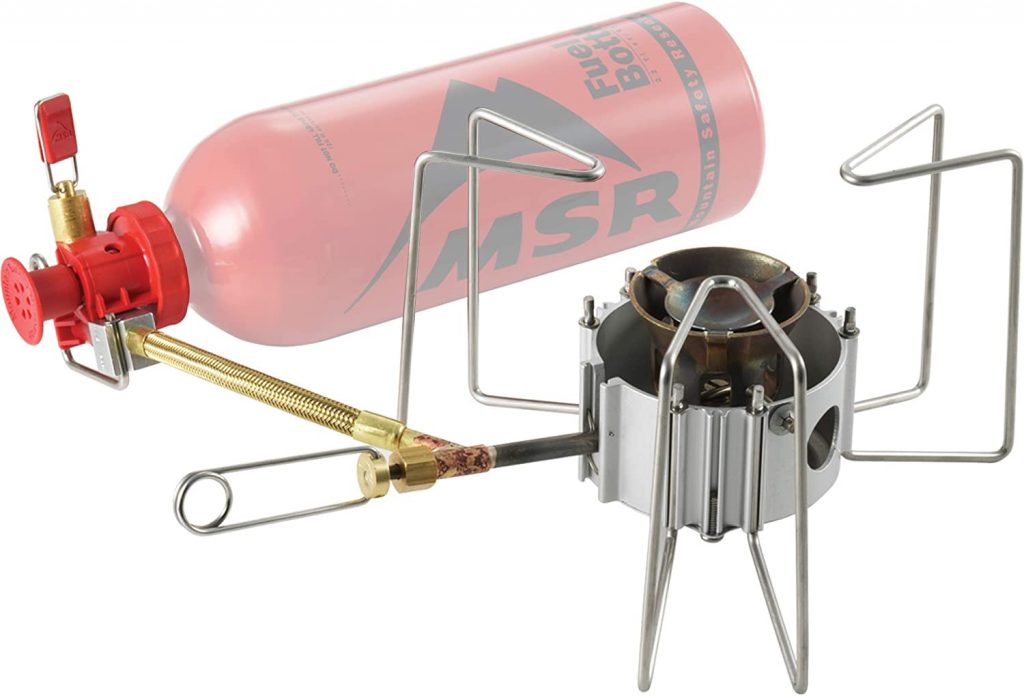
Price:$150
Fuel Type: Auto, Kerosene, Jet, White gas, Diesel
Boiling Time:
Integrated Pot: Yes
Weight: 1.1 Pounds
What We Like: Reliable in the coldest temperatures, Simmer ability, Quality construction, Easy to use and set up, Stable pot stand, Easy maintenance
What We Don’t Like: Heavy, Consumes fuel quickly on high, Pot sits too high above the flame
The MSR Dragonfly is a high-quality and reliable stove that is perfect for cold weather conditions. It has an auto-ignition feature, so you don’t have to worry about matches, and it also has a simmer ability so you can cook food slowly without burning it. It is easy to set up and use, and the pot stand is very stable. However, it does consume fuel quickly on high, so you might need to be careful about how much you use. Additionally, the pot sits too high above the flame, so you might have to adjust it slightly depending on what you’re cooking.
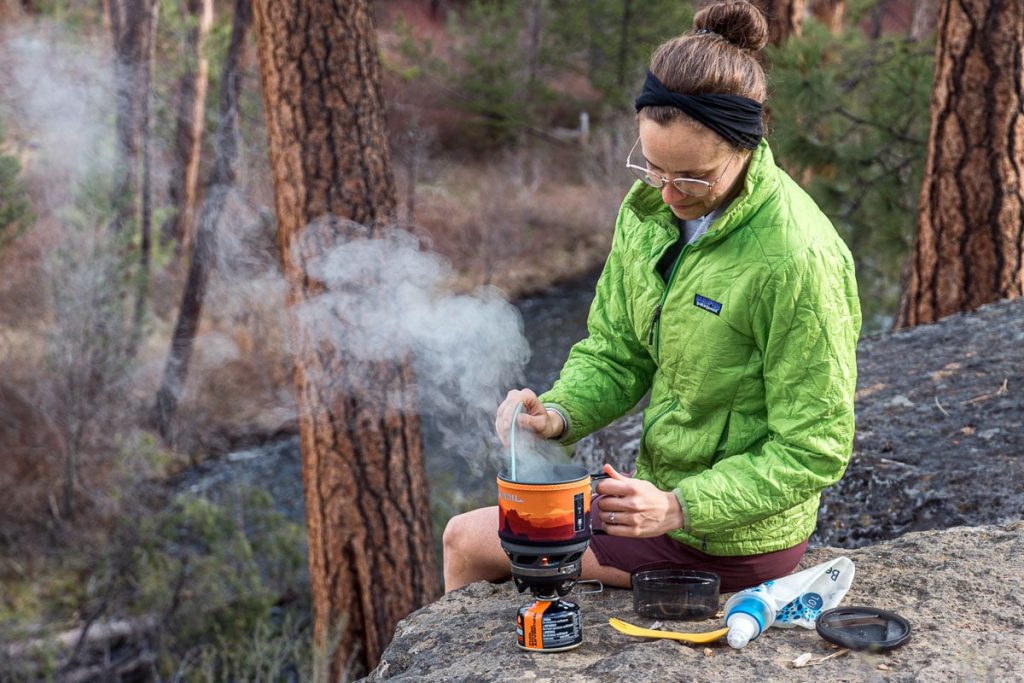
How to Choose The Best Backpacking Stoves
Backpacking stoves are built to be lightweight, compact, and work great in the outdoors. They’re typically small enough that they can fit comfortably in a backpack without weighing them down. If you’re looking for the best backpacking stove, there are a few things to consider before making a final decision:
- Type of Fuel – There are two types of backpacking stoves; liquid and gas. Liquid fuel stoves typically burn white gas or kerosene, while gas stoves use a canister of propane/butane. Each type has its own benefits and drawbacks. If you’re looking for something lightweight, a gas stove is probably the way to go. But if you want more control over your flame, liquid fuel stoves might be a better option.
- Output – The output of a stove is how much heat it produces, measured in BTUs (British Thermal Units). The higher the BTU, the faster your stove will boil water. For backpacking purposes, it’s recommended to look for a stove with an output of at least 3000 BTUs.
- Fuel efficiency/Burn time – Fuel efficiency is measured in minutes it takes for a stove to boil one liter of water. Most backpacking stoves have an average fuel efficiency of 60-100 minutes, though some are able to get up to 150+ minutes under the right conditions.
- Boiling Time – The boiling time is how long it takes for a pot of water to come to a boil. This will vary depending on the stove’s output and the altitude at which you’re camping.
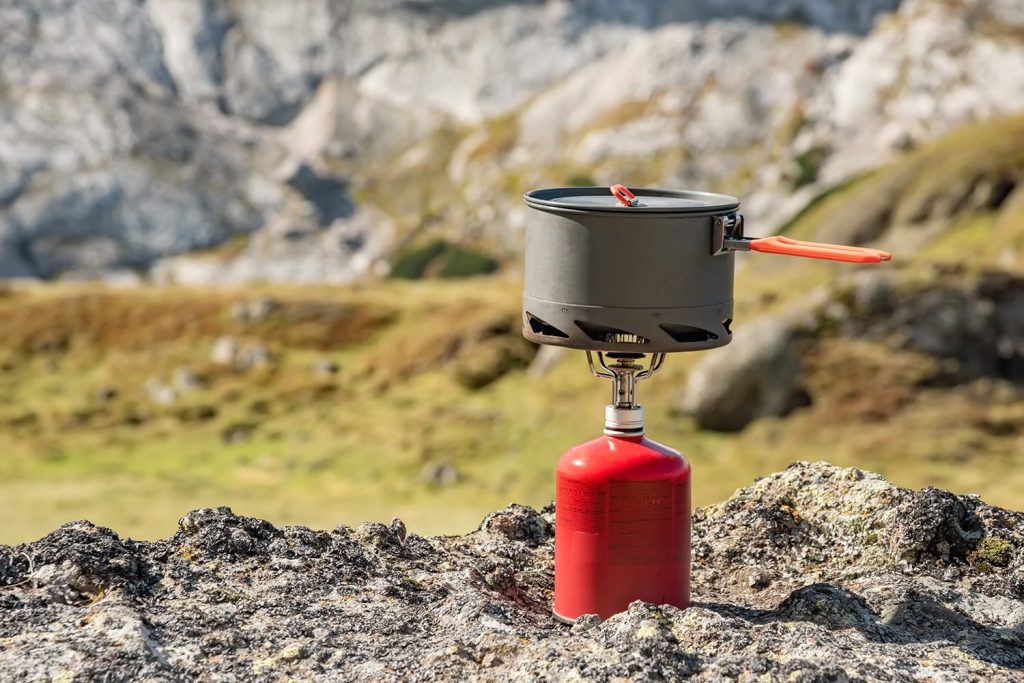
- Wind Resistance – Some backpacking stoves are more efficient than others when it comes to withstanding the wind. A stove that’s specifically designed for backpacking is usually better at dealing with this issue, but you can also look for one that has a built-in design like an integrated windshield. This will help protect your flame from any outside winds that might be trying to get in.
- Size & Weight – In general, liquid fuel stoves are going to be heavier and bulkier than gas stoves. This is because they need a separate tank for the fuel itself, which adds more weight. Some backpacking stove options can weigh as little as a few ounces (or even less), so it’s important to pay attention to this spec when making your decision.
- Price – Backpacking stoves can range in price from around $15 to $200 or more. The most expensive options often come with extra features like wind resistance and adjustable heat output, but there are plenty of affordable models that will work just fine for your needs.
- Ease of Use – Backpacking stoves can be a little tricky to use, especially if you’re not familiar with them. Look for a stove that is easy to ignite and has adjustable heat levels so you can get the perfect flame.
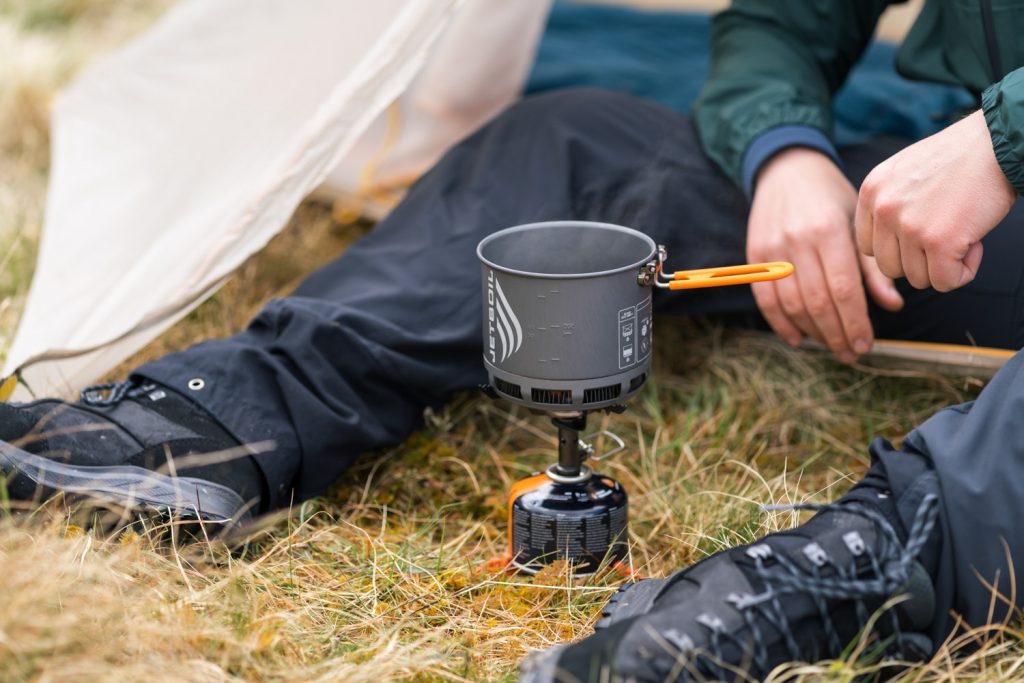
Additional Features
Some backpacking stoves come with additional features, such as windscreens or pot stands, which can be helpful in certain situations. If these features are important to you, be sure to look for them when shopping.
- Pot Stands – These allow you to cook using a pot or pan, rather than a standard backpacking stove. This is an especially good option if you plan on cooking more complex meals, like pasta and sauces.
- Windscreens – Most stoves come with their own windscreen which helps protect the flame from outside winds that might cause it to blow out. If you’re looking for extra protection, however, you can also find windscreens that attach to the stove itself.
- Stove Kits – Some backpacking stoves come in a kit that includes everything you need to get started, like a pot and a gas canister. This is a great option if you’re not sure what type of stove you want and just want to give this type of camping a try.
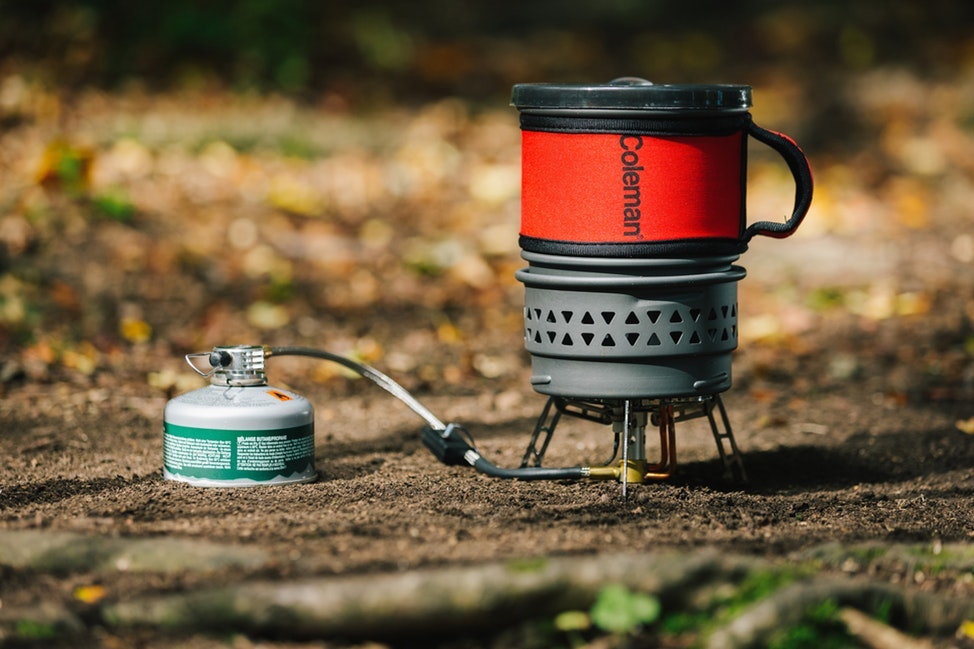
Liquid Fuel vs Canister Stove
When it comes to backpacking stoves, there are two main types: liquid fuel and canister.
- Liquid fuel stoves come in all shapes and sizes, making them a great option for anyone looking for more flexibility in their cooking options. They also tend to be cheaper than canister stoves, but they use a little more fuel and can be harder to maintain.
- Canister stoves are usually smaller and lighter than liquid fuel models, which makes them great for backpackers who want their stoves to take up as little space as possible. They’re also easier to set up and use right out of the box. These types of stoves typically use a standard threaded canister of fuel, which makes finding replacement fuel easy.
Which type of stove is right for you will depend on your own personal needs and preferences. Do some research on both types before making your final decision.
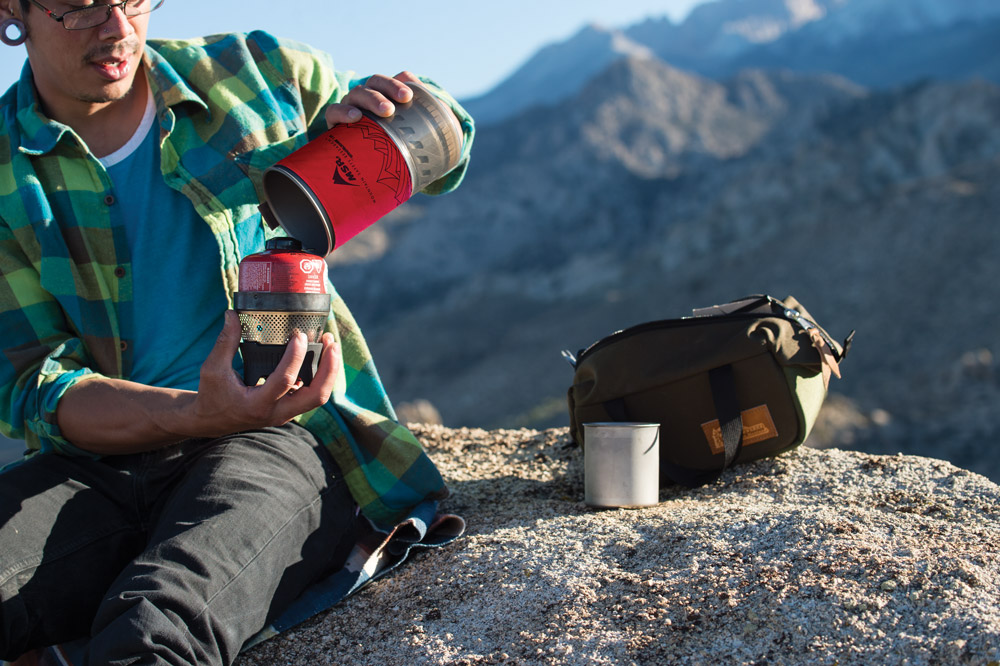
How To Clean and Maintain Your Backpacking Stove
No matter which type of stove you choose, it’s important to know how to clean and maintain it properly. This will help keep your stove running smoothly for years to come.
Most backpacking stoves can be cleaned with a simple brush or some soapy water. Be sure to read the manufacturer’s instructions on how to clean your particular model of the stove.
Here are some other tips for maintaining backpacking stoves:
- Always store the stove with the fuel cap open so it doesn’t get clogged up or corroded.
- Never let water sit inside the cookware, especially if you’re using a liquid-fueled stove. Make sure all parts (including the pot and stove) are completely dry before packing them away.
- If the stove starts to behave oddly or doesn’t seem to be working properly, take it apart and give it a good cleaning. This could save you from having to replace the entire stove down the road.
For more information on how to clean and maintain your backpacking stove click here.
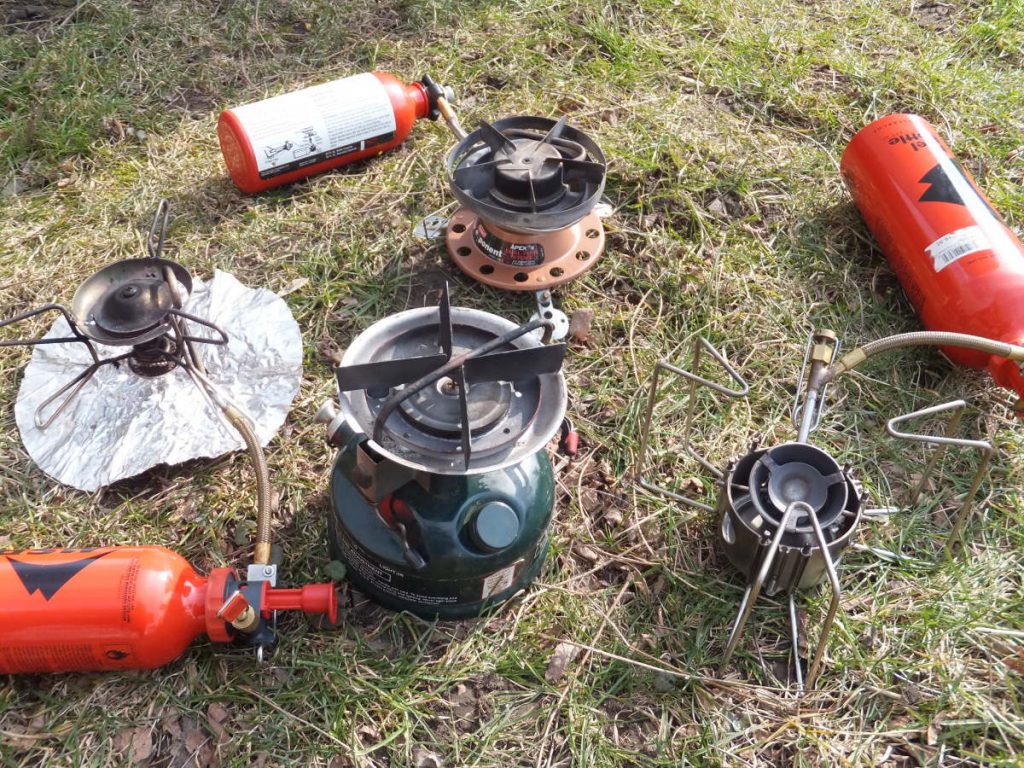
What to Avoid When Shopping for a Backpacking Stove
When shopping for your next backpacking stove, there are several things you’ll want to avoid. These include:
- Cheap models – Cheap stoves tend to break more easily and don’t work as well as high-quality models. Before buying any cheap stove, read reviews on it first so you know what you’re getting.
- Cheap fuel – Never buy stoves that use cheap fuel, like gasoline or kerosene. These fuels are dangerous and can ruin the stove itself if used improperly.
- Fragile parts – Stove models with many fragile components will need more maintenance over time, which is frustrating for anybody who wants to spend less time cleaning and more time hiking.
- Too many bells and whistles – Stoves with too many features can be confusing to use and might not work as well as a simpler model. Stick with the basics when looking for a new stove.
- Lack of warranty – Most backpacking stoves come with some type of warranty, but it’s always best to choose a model that has the longest possible coverage.
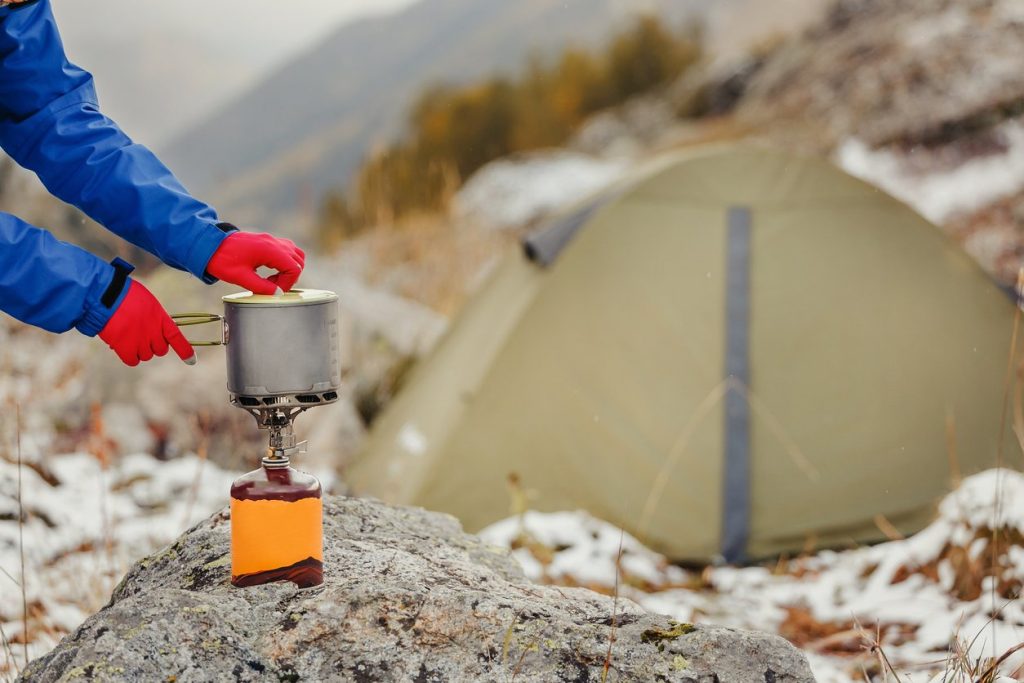
FAQ
Q. What size pot should I get with my new backpacking stove?
A. Most stoves come with a standard pot, but you can also purchase pots that are specially designed for specific stove models. You’ll want to match the size of your pot to the size of your backpacking stove so they fit together properly.
Q. How often should I clean my backpacking stove?
A. Cleaning your backpacking stove depends on how much you use it and where you store it. If the stove starts to feel clogged or doesn’t work as well, then take a few minutes to give it a good cleaning. This will help keep your stove working properly for years to come.
Q. Which is better: liquid fuel or canister stoves?
A. Both types of the stove have their advantages, so it’s best to choose the one that matches your own personal needs and preferences.
Q. How do I clean my backpacking stove after using it?
A. Most backpacking stoves can be cleaned with a simple brush or some soapy water. Be sure to read the manufacturer’s instructions on how to clean your particular model of the stove.
Q. What should I avoid when shopping for a backpacking stove?
A. Cheap models, cheap fuel, fragile parts, too many bells, and whistles, and lack of warranty are all things to avoid when shopping for a new stove.



